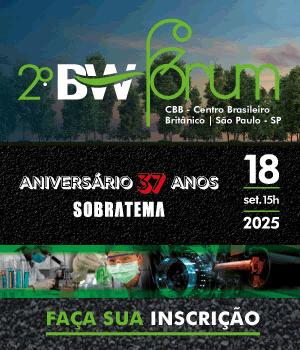Monorail: the new proposition that Brazil’s metropolises are betting on

By the end of 2013 the first 2.9 kilometers of the São Paulo Metro’s Line 15-Silver monorail will come into operation - a new initiative that Brazil’s largest city is betting on for public transportation. Resting upon precast concrete pillars up to 15 meters tall each, the trains will connect São Paulo’s easternmost borough (Cidade Tiradentes) to the Metro station of Vila Prudente. It is estimated that the project will be 100% completed in 2016. The consortium of companies that makes the construction of this project possible consists of the Queiroz Galvão, OAS and Bombardier Groups. Both the vehicles and the construction technology are new to the country and may indicate a new alternative for mass transport in the country’s major cities.
The monorail will move up to 500,000 passengers per day. The system will consist of 54 electric trains that will reach speeds of up to 80 km/h. They will serve 17 stations. Each train will have seven cars and can carry up to a thousand passengers. The system is already used successfully in major urban centers in Asia, Europe and North America. If successful in São Paulo, it should be able to promote similar projects in other cities. Rio de Janeiro and Manaus have projects and Porto Alegre is studying the expansion of the system, which the city has christened the “aeromóvel” or ‘airmobile’”.
 The choice of the system was guided by factors such as the monorail’s shorter construction time and the speed of entry into operation, in addition to cost - estimated at R$ 2.4 billion (US$ 1.2 billion). While a subway line of 26.5 kilometers would take 15 years to be completed, the monorail will be delivered for use by the city’s population in less than five years’ time. In one year, it is possible to build 5 km of monorail lines, that is, approximately half the time required for the construction of an underground Metro. That is possible thanks to fewer expropriations, which consume time and resources, and because there are no excavations as required when building a conventional subway.
The choice of the system was guided by factors such as the monorail’s shorter construction time and the speed of entry into operation, in addition to cost - estimated at R$ 2.4 billion (US$ 1.2 billion). While a subway line of 26.5 kilometers would take 15 years to be completed, the monorail will be delivered for use by the city’s population in less than five years’ time. In one year, it is possible to build 5 km of monorail lines, that is, approximately half the time required for the construction of an underground Metro. That is possible thanks to fewer expropriations, which consume time and resources, and because there are no excavations as required when building a conventional subway.
The method of construction makes use of precast concrete elements which reduce the impact of the work on public roads during the line’s construction. Two thousand beams, measuring between 1.2 and 1.5 meters in height and 30 meters in length, will be used. Each element will consume an average of 42 cubic meters of concrete.
This complex of precast elements will support slabs 30 feet long and weighing 70 tons. To ensure the precision these elements, the consortium in charge of the work has built a factory to manufacture these precast elements for the project alone. Beams and slabs need to fit together seamlessly to very exacting standards and satisfy the peculiarities of the project’s requirements, such as curved elements and variable superelevation. To meet the demand, all precast elements use 50 MPa concrete and are cured electrically (heat curing).
Top-notch rolling stock
 Produced at the Bombardier plant in Hortolândia (SP), the first train for Line 15-Silver of the São Paulo Metro’s monorail, with seven cars and 86 feet in length, should be ready by the end of July and will be transported by truck that same month to the Metro’s ‘Oratório’ equipment yard. There, the train will undergo dynamic testing. The first two cars of the line were manufactured by Bombardier in Kingston, Canada and are being tested on a circuit track. Bombardier’s goal is to deliver five trains by December of this year.
Produced at the Bombardier plant in Hortolândia (SP), the first train for Line 15-Silver of the São Paulo Metro’s monorail, with seven cars and 86 feet in length, should be ready by the end of July and will be transported by truck that same month to the Metro’s ‘Oratório’ equipment yard. There, the train will undergo dynamic testing. The first two cars of the line were manufactured by Bombardier in Kingston, Canada and are being tested on a circuit track. Bombardier’s goal is to deliver five trains by December of this year.
To Bombardier, the biggest challenge was to produce a light-weight train that could also provide high passenger capacity. The Line 15-Silver monorail weighs 105 tons, or about 15 tons per car, while each of a Metro train’s six cars weighs about 30 tons. According to the Canadian company, the monorail trains have the same passenger capacity of a conventional subway, but with half the weight - which means it consumes less energy.
The company’s factory in Hortolândia has a staff of 250 people working on the assembly of the trains. Altogether, Bombardier has 400 employees in Brazil. According to the company, the São Paulo monorail project is employing around one thousand people.
According to Bombardier, this will be the monorail with the highest passenger capacity in the world. Before the Brazilian project, the monorail with highest capacity to transport passengers manufactured by Bombardier was the one in Las Vegas (USA) which carries about 10,000 passengers per hour in both directions.

Av. Francisco Matarazzo, 404 Cj. 701/703 Água Branca - CEP 05001-000 São Paulo/SP
Telefone (11) 3662-4159
© Sobratema. A reprodução do conteúdo total ou parcial é autorizada, desde que citada a fonte. Política de privacidade











